AT&T’s 5G Network
AT&T has launched its 5G network across the United States, providing customers with faster and more reliable connectivity. With the rollout of AT&T’s 5G network, many people are interested in learning more about the company’s 5G spectrum, frequency bands, coverage, and the differences between 5GE, 5G, and 5G+. In this article, we will provide an overview of AT&T’s 5G offerings to help answer some of these questions.
WE FIX POOR CELL PHONE SIGNAL! FIND THE RIGHT SIGNAL BOOSTER FOR YOU:

AT&T’s Low-Band, Mid-Band, & High-Band 5G Spectrum
Like all cellular providers, AT&T’s 5G network is made up of three flavors: low-band, mid-band, and high-band (mmWave).
Their 5G strategy began with deploying mmWave spectrum, also known as high-band and 5G+, in select cities. These signals deliver super-fast speeds, great capacity, and ultra-low latency. However, they can’t travel long distances or penetrate obstacles. It’s primarily available in densely populated cities and high-traffic areas (i.e., stadiums, airports, and venues). It’s been deployed in over 45 cities and more than 45 stadiums and venues.
In 2019, AT&T launched its low-band spectrum (dubbed 5G) using the 850 MHz band. It became available nationwide in mid-2020. AT&T’s Low-Band 5G currently reaches over 281 million people innearly 22,000 cities and towns. Low-band signals can travel long distances and penetrate obstacles. They’re able to provide significantly more coverage inside and outside than 5G+. Thus, it has been predominantly pushed out in residential, suburban, and rural areas. Speed and capacity, however, are significantly less. In fact, low-band speeds aren’t noticeably different than 4G (or 5GE as AT&T likes to call it).
To rapidly deploy Low-Band 5G, AT&T uses Dynamic Spectrum Sharing (DSS) technology on certain low-band spectrum. This technology allows AT&T’s 5G network to operate on the same frequencies as 4G. In the short term, this strategy affects speed and capacity. As more people upgrade to 5G, that will no longer be the case.
AT&T started deploying mid-band 5G in January 2022. This spectrum is especially important for 5G. It offers a blend of speed, capacity, penetration, and range. AT&T’s mid-band consists of frequency bands 3.45 GHz and 3.7 (C-Band) GHz. Parts of AT&T’s C-Band won’t be available till 2023. AT&T also refers to this spectrum as 5G+.
AT&T is continuously working on expanding its 5G and 5G+ coverage.
What 5G Frequencies Does AT&T Use?
Cellular carriers can use existing 4G frequencies or purchase new spectrum from the FCC for 5G use. They will vary by provider. AT&T uses:

Visit our guide to learn more about 5G frequencies.
What’s the Difference Between AT&T 5G and 5G+?
AT&T’s 5G naming convention can be quite confusing. You have 5G, 5G+, and 5G Evolution (5GE).
1.5G Evolution, or 5GE for short, is not real 5G. It’s just 4G LTE Advanced. In 2020, AT&T stopped advertising 5GE. However, if a 5GE indicator still pops up on your device’s status bar, be advised that IT IS NOT TRUE 5G.
2.AT&T uses 5G to signify its Low-Band 5G network, available nationwide. When connected to this spectrum, a 5G icon will appear on your device’s status bar. Performance will be the same or slightly better than 4G and LTE.
3.5G+ (or 5G Plus), refers to AT&T’s Mid- and High-Band 5G networks. 5G+ is mainly available in relatively high-traffic suburban and urban areas. Depending on whether you’re connected to mid-band or high-band, speeds can range from 100 Mbps to 1+ Gbps. Significant improvement from 5G. Your device will display a 5G+ icon in areas where it’s available.
T-Mobile 5G and Verizon 5G also use different names for their Low-, Mid, and High-Band 5G networks.
Where is AT&T 5G Available?
AT&T offers nationwide 5G coverage built on the Sub-6 spectrum (frequencies below 6 GHz). It reaches over 281 million people. But it’s not available everywhere. To connect to AT&T’s 5G or 5G+ networks, you need to be in a 5G area. Here is a snapshot of their 5G coverage map:
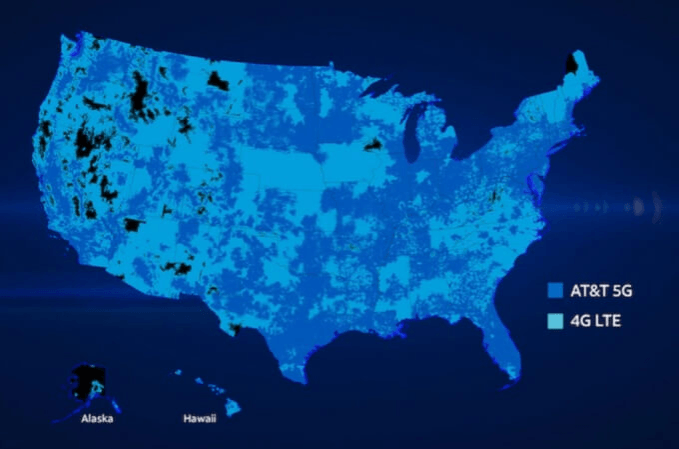
As you can see, AT&T’s 5G network is currently limited. Take a look at their 5G coverage map to see if 5G is available near you. There’s a disclaimer stating that 5G+ connectivity is only available in select areas. They include (as of October 2022):
Cities
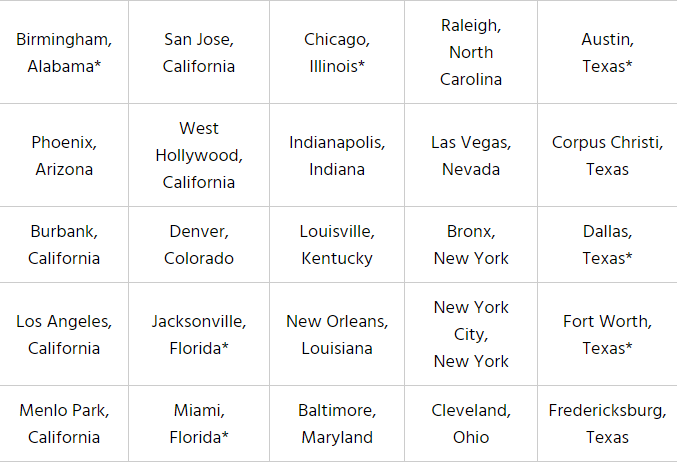
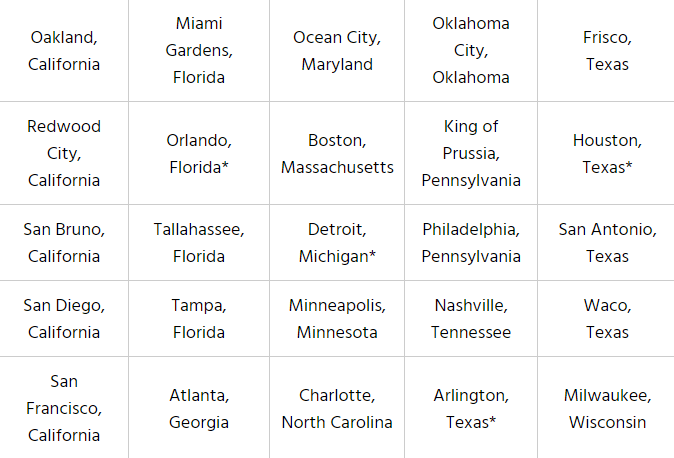
Arenas, Venues, & Airports
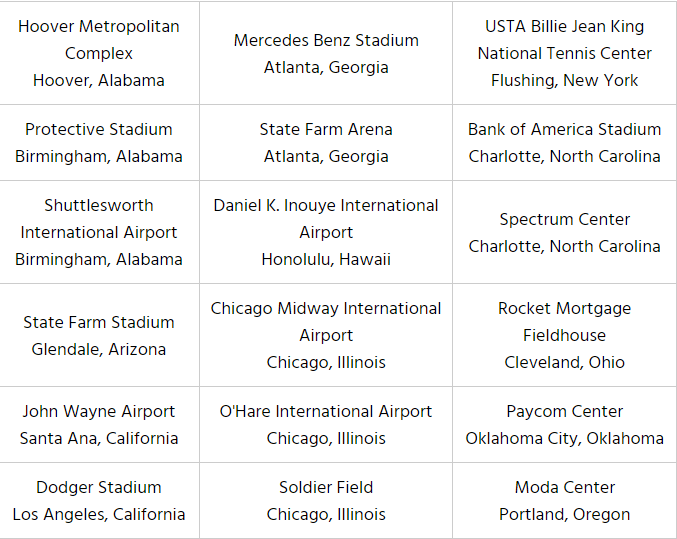
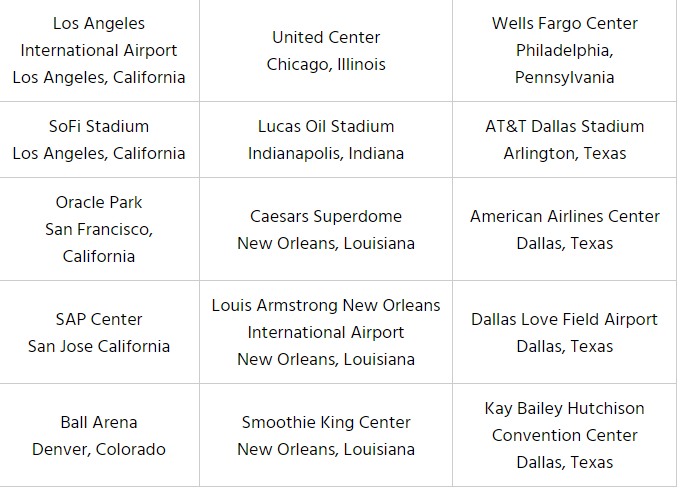
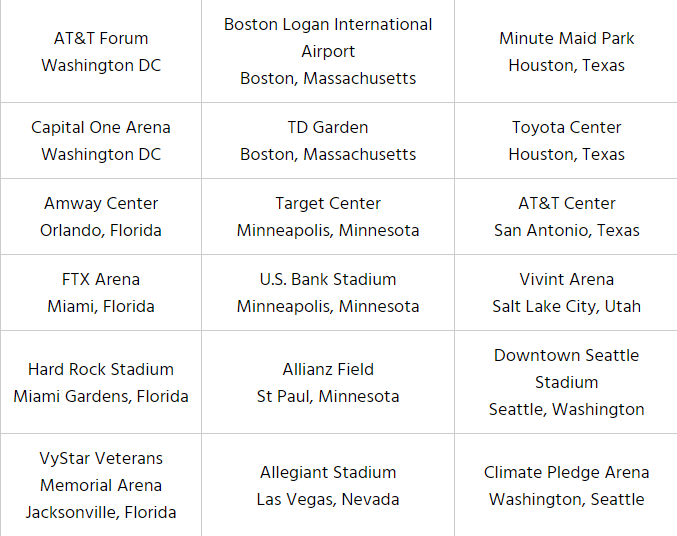
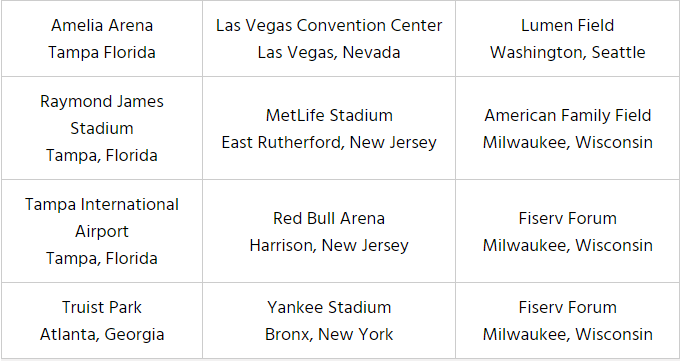
You won’t find cell tower location data on coverage maps. If that’s what you’re interested in, click here to find an AT&T cell tower near you.
AT&T 5G Plans & Devices
A compatible plan and device are required to access AT&T’s 5G and 5G+ networks.
When AT&T first launched 5G, there weren’t many device options. The first device that tapped into the new generation network was the Nighthawk 5G Mobile Hotspot. In the first half of 2019, they released their first 5G smartphone. Now, they have various options from Samsung, Apple, Google, and Motorola. You can shop AT&T 5G devices here.
Your 5G device needs a 5G plan to be able to use 5G anywhere it’s available. AT&T offers four 5G plans.
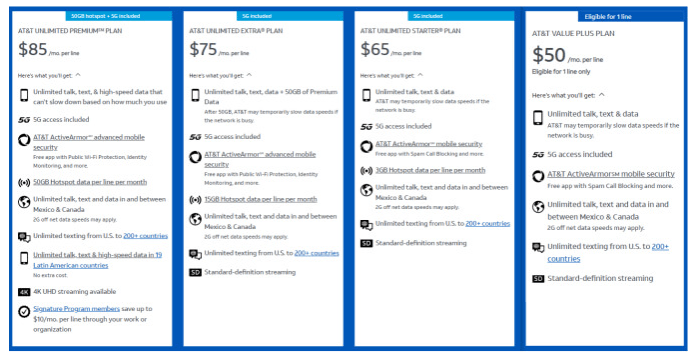
All plans include 5G and 5G+ access at no extra cost. Some carriers, like Verizon, include total 5G access on their expensive plans and only low-band access on their cheaper plans.
AT&T’s Prepaid service only offers one 5G plan. It’s $65 per month plus taxes and fees. It offers access to all flavors of 5G, unlimited high-speed data, SD streaming, and much more. Mobile hotspots can be added for $10 a month.
4G plans WILL NOT provide 5G or 5G+ access.
Does AT&T Offer 5G Home Internet?
AT&T doesn’t offer 5G Home Internet like Verizon or T-Mobile. Their internet offerings are focused on fiber. However, you can use a cellular router or mobile hotspot with a 5G data plan to keep your home or office connected.
Do Signal Boosters Work with AT&T 5G?
Even though you live or work in a 5G area, sometimes indoor 5G coverage is nonexistent. This could be due to the 5G cell tower distance or building materials. Luckily, cell phone signal boosters can help, to an extent.
Cellular boosters take your existing outside signal, amplify it, and rebroadcast it indoors. They’re designed to capture signals operating on specific frequency bands. Most boosters support 4G and 5G bands 700 MHz, 850 MHz, 1.7/1.2 GHz, and 1.9 GHz. They will only work with AT&T’s 5G 850 MHz spectrum, which is perfect for most people. While you may prefer enhanced 5G+ coverage, it might not even be available in your area.